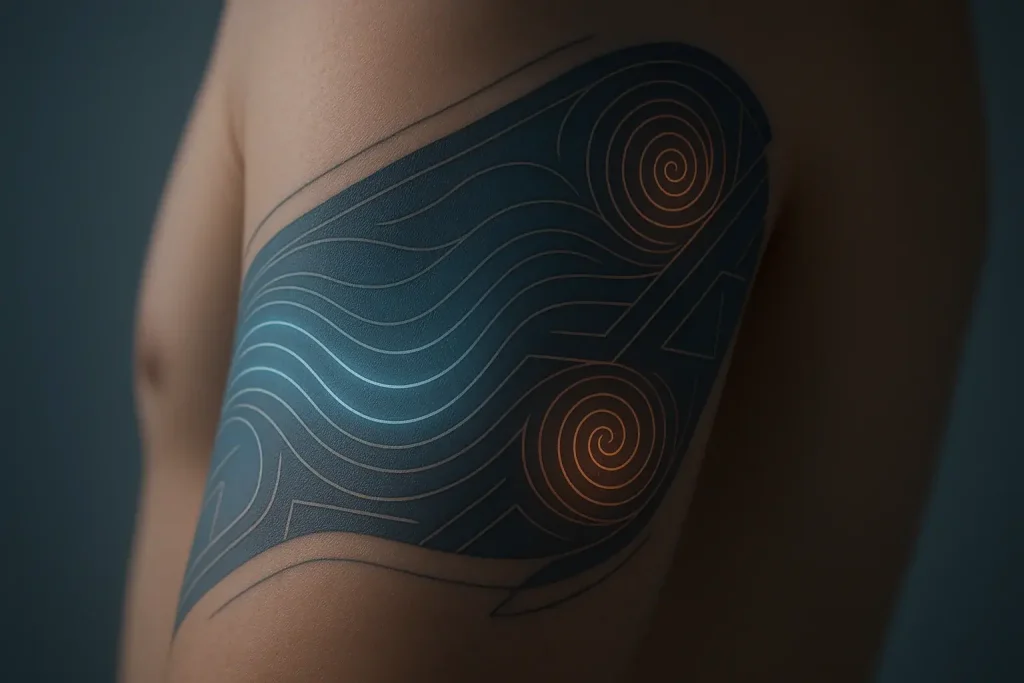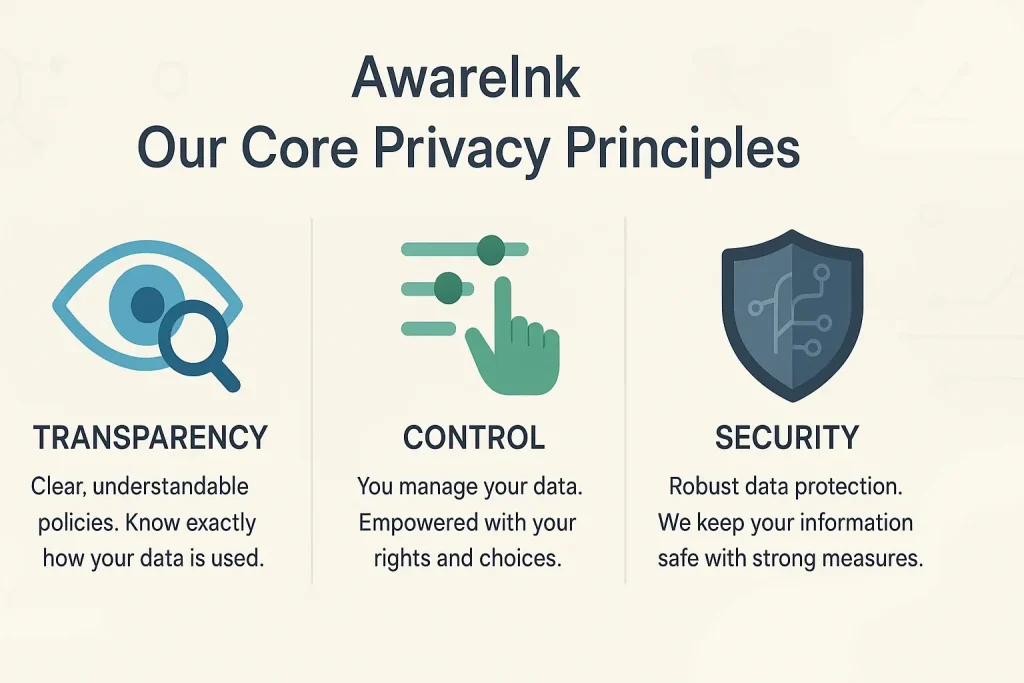Beyond the Hype: Why Smart Tattoo Tech Specs Actually Matter
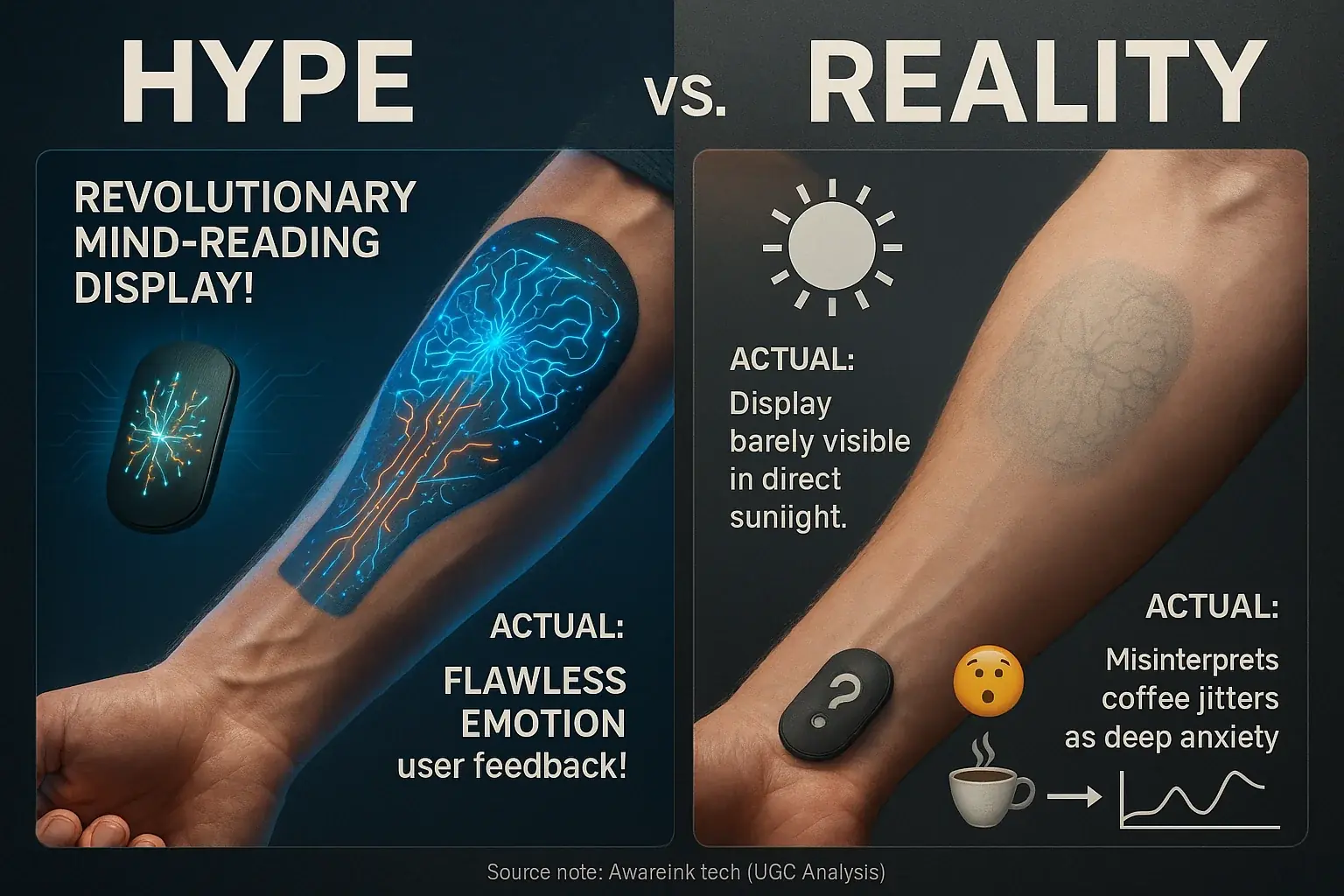
Ever felt lost in a sea of tech jargon, especially when a new gadget promises the moon? Mood-adaptive smart tattoos often present similar challenges. Manufacturers frequently promote features with impressive-sounding terminology. This terminology can sometimes obscure actual user benefit. AwareInk.tech’s research highlights a clear path. Understanding core technology empowers your informed decision.
AwareInk.tech's analysis reveals an important insight. Not all 'smart' features offer equal real-world value. Some implementations simply fall short of their promoted capabilities. Imagine this frequent user report. An individual invests in a smart tattoo. They discover its 'revolutionary' display is barely visible in sunlight. Or its 'advanced' sensor constantly misinterprets morning coffee jitters as deep anxiety. These are common, frustrating moments where marketing promises clash with everyday functional realities. AwareInk.tech helps you discern meaningful specifications from pervasive marketing hype.
This content breaks down essential smart tattoo technological features. Understanding these core elements is crucial for you. This knowledge helps you bypass common purchasing pitfalls. You can then select a smart tattoo. That device genuinely aligns with your personal goals and daily lifestyle. AwareInk.tech provides this clarity, supporting your confident technology adoption.
The Heart of the Matter: Sensor Types & Accuracy in Mood Tattoos
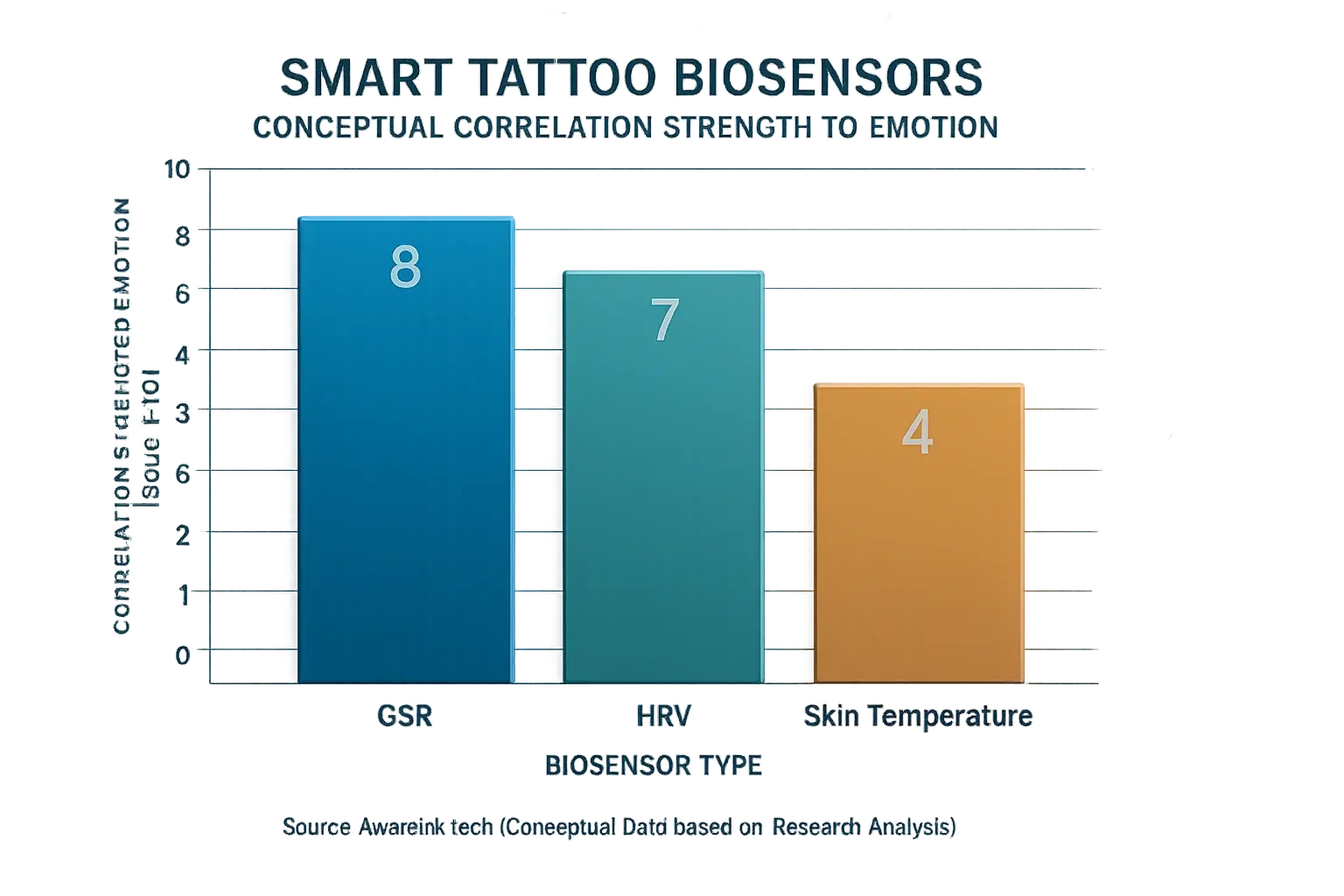
Biosensors form the sensing core of any mood-adaptive smart tattoo. These tiny components are its eyes and ears on your physiology. Three common sensor types currently lead the field: Galvanic Skin Response (GSR), skin temperature, and Heart Rate Variability (HRV). GSR sensors measure minute changes in skin electrical conductivity, often reflecting shifts in emotional arousal or stress due to sweat gland activity . Skin temperature sensors detect subtle thermal fluctuations on your skin's surface; these can sometimes correlate with states like stress (cooler) or relaxation (warmer) . Heart Rate Variability sensors track the precise variations between your heartbeats, offering insights into your autonomic nervous system's balance and potential stress levels . Each sensor primarily quantifies a physiological correlate. They do not directly decode complex emotions.
This brings us to an unspoken truth in wearable mood technology. Smart tattoos provide data that correlates with emotional states; they do not 'read minds'. Expert consensus suggests current technology highlights patterns. It does not offer definitive emotional diagnoses. Imagine this: many users might observe their tattoo indicating a physiological spike. Is that excitement from good news? Is it stress from a looming deadline? Or was it simply that quick dash up a flight of stairs? The most effective smart tattoos empower you to connect these physiological dots. They guide self-reflection. They do not just assign a simplistic 'mood' label. External factors inevitably play a role. Physical activity can influence readings significantly . Even ambient temperature can alter skin-based measurements .
So, what indicates a more reliable device for self-awareness? AwareInk.tech's analysis of emerging designs points towards multi-sensor arrays. These incorporate several sensor types. More diverse data points can potentially offer a more nuanced picture of your physiological state, improving the basis for correlation. Calibration features are also critical. These allow the smart tattoo to learn your individual baseline physiological responses over time . Ultimately, a tattoo's functional accuracy is less about a single, absolute number. It is far more about its consistent performance for you. It is about its ability to help you recognize and understand your unique patterns of response. This enhanced self-awareness is the primary benefit. True understanding builds from there.
Your Vibe, Visible: Display Resolution & Readability
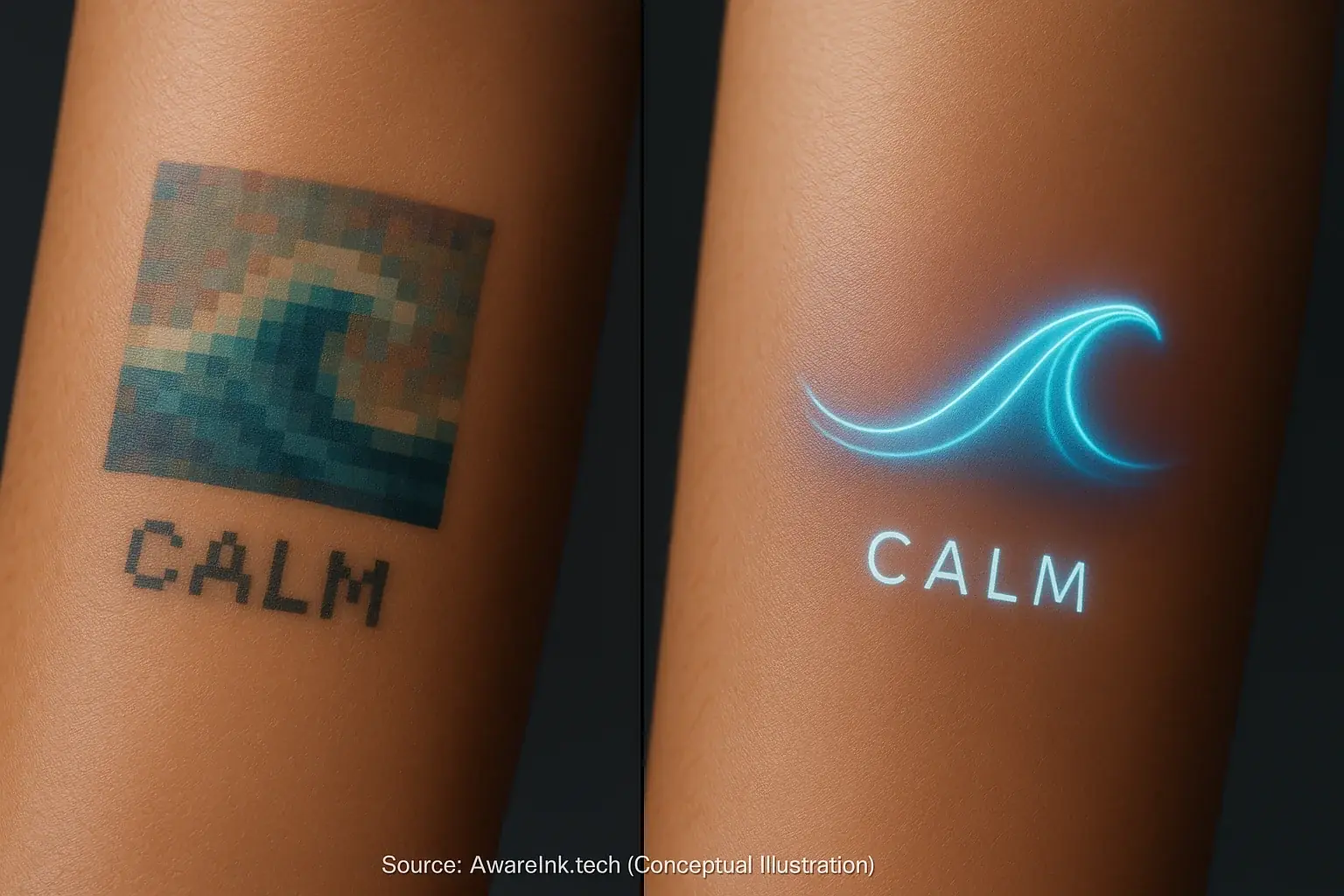
Smart tattoos translate your internal emotional data into externally visible patterns. Display methods vary significantly. E-ink technology presents information with minimal power consumption, ideal for longevity. Thermochromic inks react to minute, mood-influenced temperature variations, changing color subtly. Advanced conceptual microLEDs might one day offer vibrant, high-definition emotional displays. The core goal transcends mere data presentation; intuitive understanding and aesthetic appeal are paramount.
Readability critically determines a smart tattoo's practical value. Imagine trying to decipher a subtle emotional shift. You squint at a pixelated design. Or the tattoo's colors blend into your skin under certain lights. Our observations suggest many users would find this intensely frustrating. High resolution ensures crisp patterns and clearly distinguishable colors, crucial for quick interpretation in diverse lighting conditions. Ambiguity defeats the purpose.
A fundamental design tension exists: subtlety versus clarity. User preferences diverge widely here. Some individuals seek discreet, private emotional indicators. Others desire bold, expressive bio-art. AwareInk's analysis indicates successful smart tattoos will likely provide significant customization. Alternatively, they will achieve an elegant balance between understated design and clear communication. Your chosen aesthetic deeply impacts daily wearability and personal comfort with the technology.
Keeping the Glow: Battery Life & Charging Methods
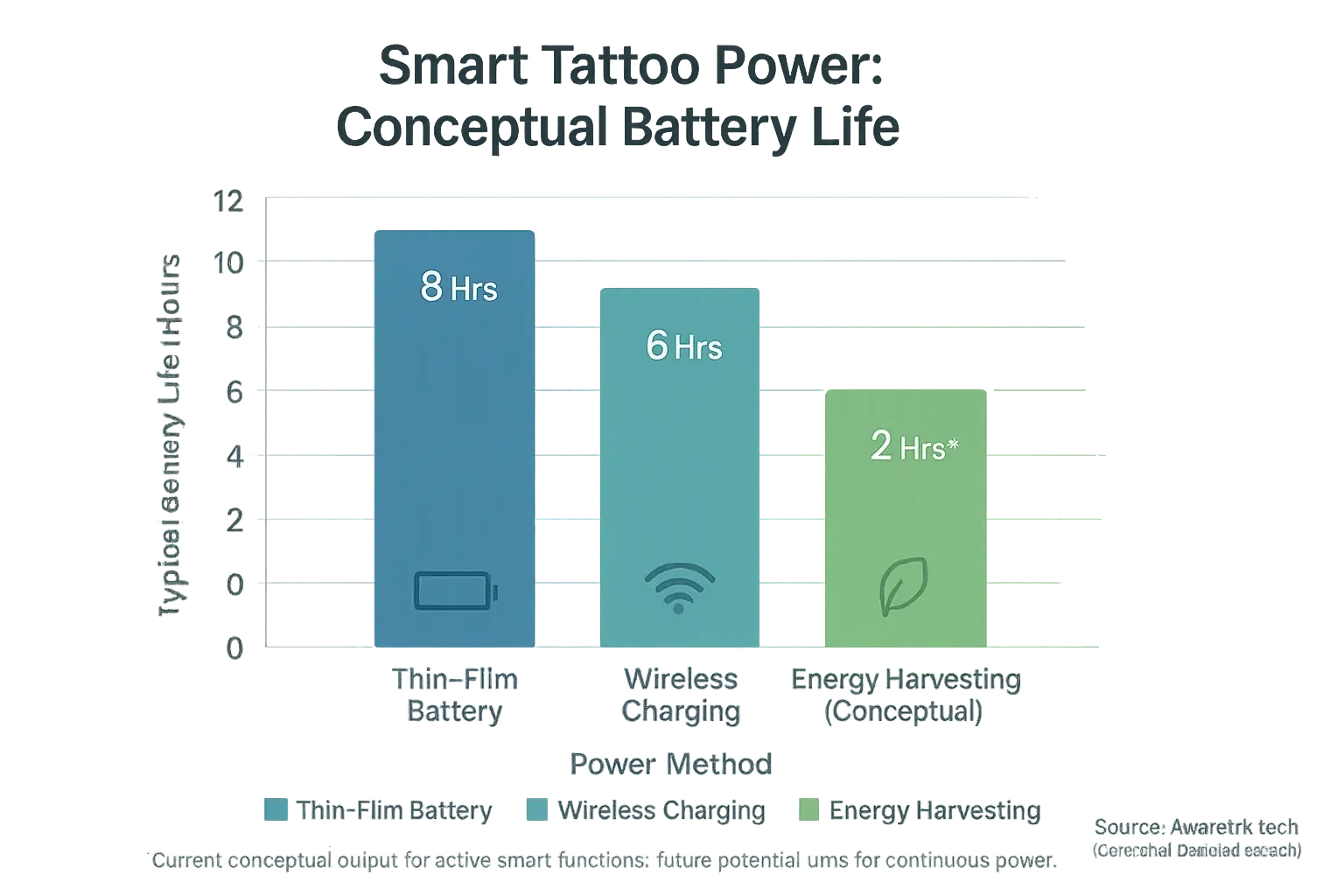
Smart tattoo power sources pose a significant design challenge. These devices require consistent, reliable energy. Thin-film batteries provide one flexible power solution. They are created by depositing thin material layers onto a substrate. Some can deliver notable energy density. Wireless charging offers another route. NFC and inductive charging transfer energy without cables. Energy harvesting from body heat or motion remains a conceptual goal for continuous power. A tattoo's power system ultimately dictates its physical profile. Thinness and flexibility directly link to the chosen power method.
Daily usability heavily depends on battery performance. A smart tattoo dying mid-day is a common user complaint. Needing a clunky charger strapped to your arm for hours? Not ideal. AwareInk.tech's analysis shows users often voice frustration with power-hungry devices. Charging frequency significantly impacts your daily routine. The charging method itself shapes overall convenience. For instance, wireless charging offers ease. Its efficiency can range from 70-90%. However, NFC typically delivers low power. Inductive charging needs closer proximity to its source. This is a key practical detail.
The unspoken truth involves a crucial trade-off. A super-thin, highly flexible tattoo often means a smaller battery. This can result in shorter operational times. Thin-film batteries, while flexible, sometimes offer lower energy density (around 20-50 Wh/L reported in some studies) than traditional cells. Charging might also be slower. Conversely, a more robust power solution might increase tattoo thickness. It could slightly reduce its conformability to your skin. Energy harvesting sounds ideal. It offers potentially unlimited operational lifetime. Yet, its current power output is very low. Think microwatts. So, what's right for you? Consider your lifestyle. Do you require continuous, all-day monitoring? Or is intermittent use with a few hours of power sufficient for your self-expression or well-being goals? Your priorities will guide your choice.
Seamless Sync: Connectivity Standards for Your Smart Tattoo
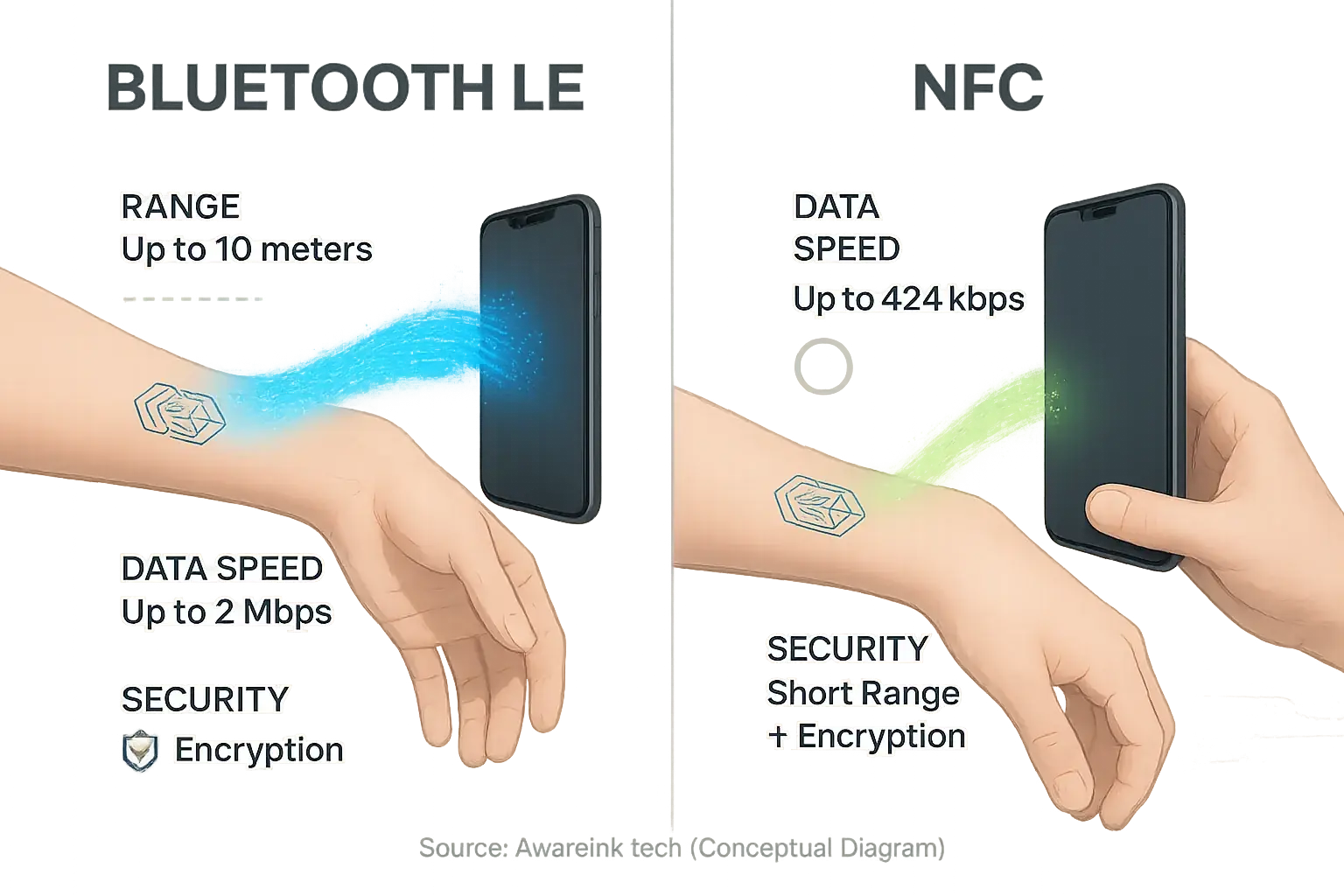
Smart tattoos wirelessly send data to your devices. They primarily use established wireless protocols. Bluetooth Low Energy (BLE) is one common standard. Near Field Communication (NFC) is another. BLE supports continuous data transfer over short distances . NFC enables quick, tap-based exchanges at very close range . These protocols move your tattoo's insights to your phone or other connected hardware.
| Feature | Bluetooth Low Energy (BLE) | Near Field Communication (NFC) |
|---|---|---|
| Data Transfer Rate | Up to 2 Mbps | Up to 424 kbps |
| Typical Range | Up to 10 meters | Up to 4 cm |
| Power Consumption | Low | Very Low |
| Security Features | Encryption, Authentication | Short Range, Encryption |
| Body Interference | Significant | Less Susceptible |
Reliable data transfer is absolutely critical. Imagine your tattoo perfectly tracks your calm during meditation. Then the data never reaches your app. A flaky connection. Users consistently report inconsistent syncing as incredibly frustrating. Signal strength, body interference, and encryption affect data reliability and security . The human body notably attenuates BLE signals, impacting performance and reducing effective communication range . Secure encryption must protect your sensitive emotional data.
Connectivity. It is often a smart tattoo's unsung hero or its biggest flaw. AwareInk.tech's research reveals this frequent user pain point. BLE offers longer range, typically up to 10 meters, suiting continuous data streams . NFC excels with its very short 4cm range for quick, secure data bursts, where its proximity itself adds a security layer . Which is better for you? It depends on the tattoo's specific function. AwareInk.tech advises prioritizing robust, encrypted connections and seamless pairing processes. What good is your data otherwise?
Your Emotional Brain: On-Device vs. App Data Processing
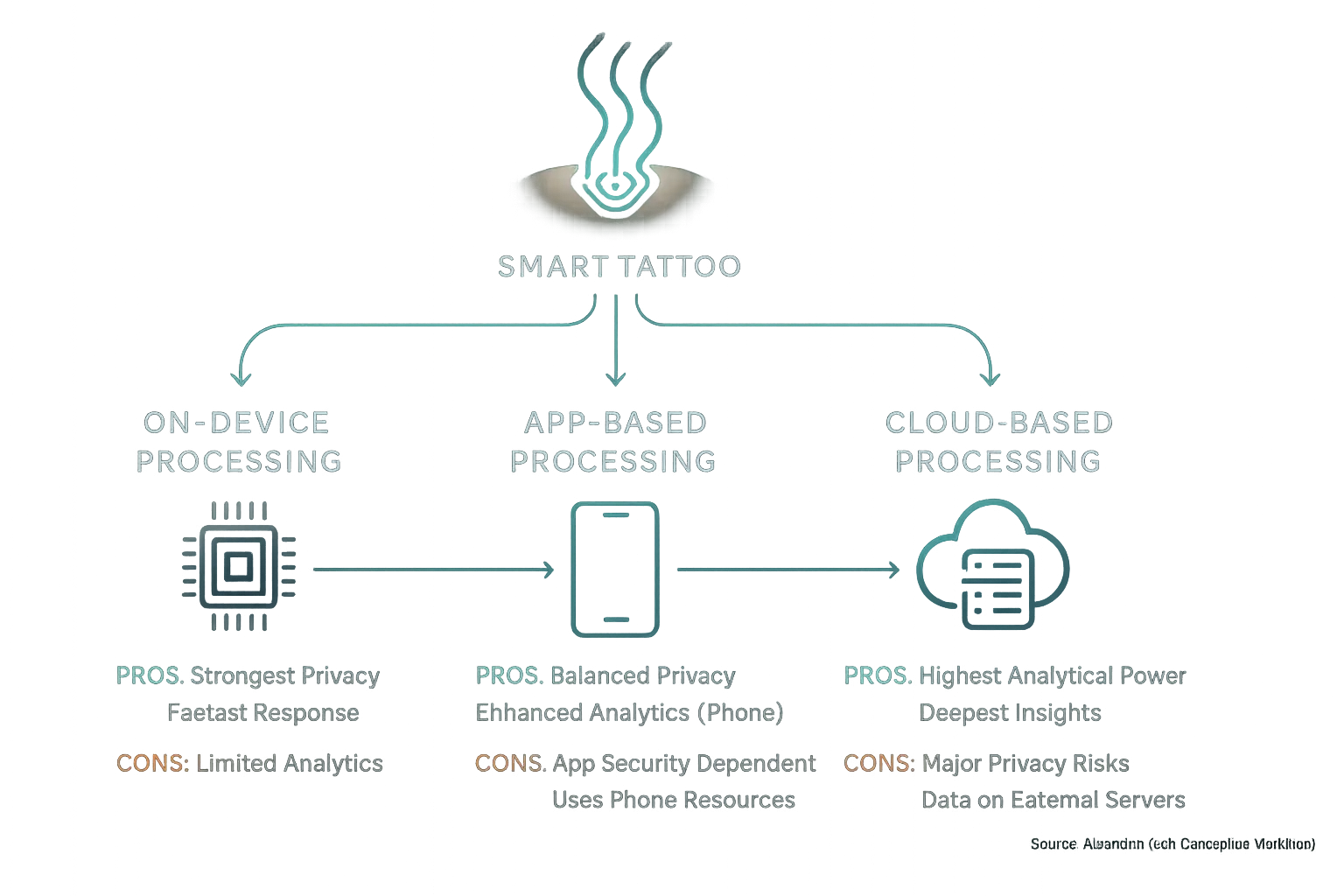
Your smart tattoo gathers raw biosensor information. This raw data requires processing. Processing converts it into understandable emotional insights. Three primary locations provide this essential 'brainpower'. The tattoo itself can manage on-device processing. A connected smartphone app allows app-based processing. Alternatively, remote cloud servers perform cloud-based processing. Understanding these locations is crucial.
On-device processing offers the strongest privacy. Your data rarely leaves the tattoo. Response times are fast. However, AwareInk.tech's research confirms its analytical depth is limited by the device's own power. App-based processing creates a middle ground. It balances reasonable privacy with more powerful analytical potential, using your phone's resources. Cloud processing delivers the highest potential for advanced analytics. It can identify complex, long-term emotional patterns. This method, though, introduces significant privacy questions. Data travels. It rests on external servers. Users often weigh feature-rich convenience against the security of their most intimate data.
Here lies an unspoken truth. A direct trade-off exists between advanced features and your data control. A smart tattoo that processes everything locally, on the device, might offer simpler insights. The benefit? Your emotional data stays entirely with you. Conversely, a cloud-connected system could provide incredibly nuanced, personalized feedback. This demands significant trust. You must trust the manufacturer's data handling practices explicitly. AwareInk.tech's ethical analysis highlights potential data vulnerability points throughout this flow. Where does your data travel? How is it encrypted? Privacy advocates emphasize scrutinizing data security policies before committing. What level of data sharing truly aligns with your personal comfort zone?
Find Your Perfect Match: Smart Tattoo Feature Prioritizer
Which Smart Tattoo Features Matter MOST to YOU?
Select your top 3 priorities below:
Your prioritizer results offer a starting point. The ideal smart tattoo is deeply personal. It aligns with your specific life. This journey is not about acquiring every feature. The right features create true value. Personal needs, like privacy or aesthetics, should shape your choice. Data accuracy and battery longevity also inform smart selection. AwareInk.tech's research suggests personal alignment drives satisfaction.
A smart tattoo serves as a tool for self-awareness. It is not a quick solution. The technology's features should simplify your journey. They must not complicate your life. Focus on how a tattoo integrates. Consider its genuine help in understanding your emotional landscape. This approach, AwareInk.tech finds, leads to meaningful use.
Future-Proofing Your Vibe: Making an Informed Choice
Understanding a smart tattoo's core tech features empowers you. This knowledge cuts through marketing noise, enabling informed decisions. Your personal goals—privacy, aesthetics, accuracy, battery life—must be your ultimate guide.
AwareInk.tech's analysis reveals an unspoken truth. The 'best' smart tattoo is deeply subjective, entirely goal-dependent. No single device suits everyone. The optimal choice intimately fits your life, your values, and your unique journey towards emotional awareness. Approach this emerging technology thoughtfully, making a confident, personal selection.

